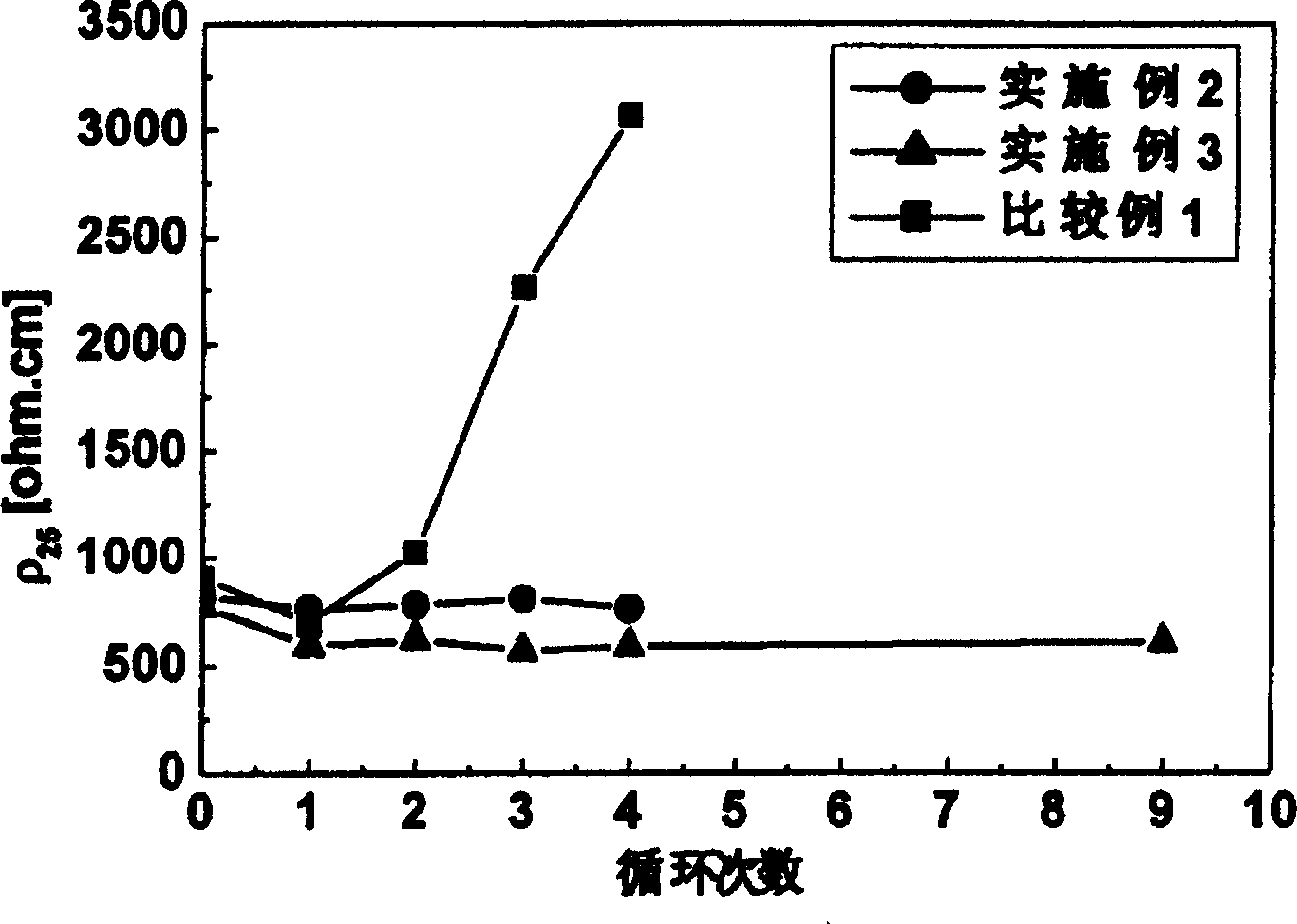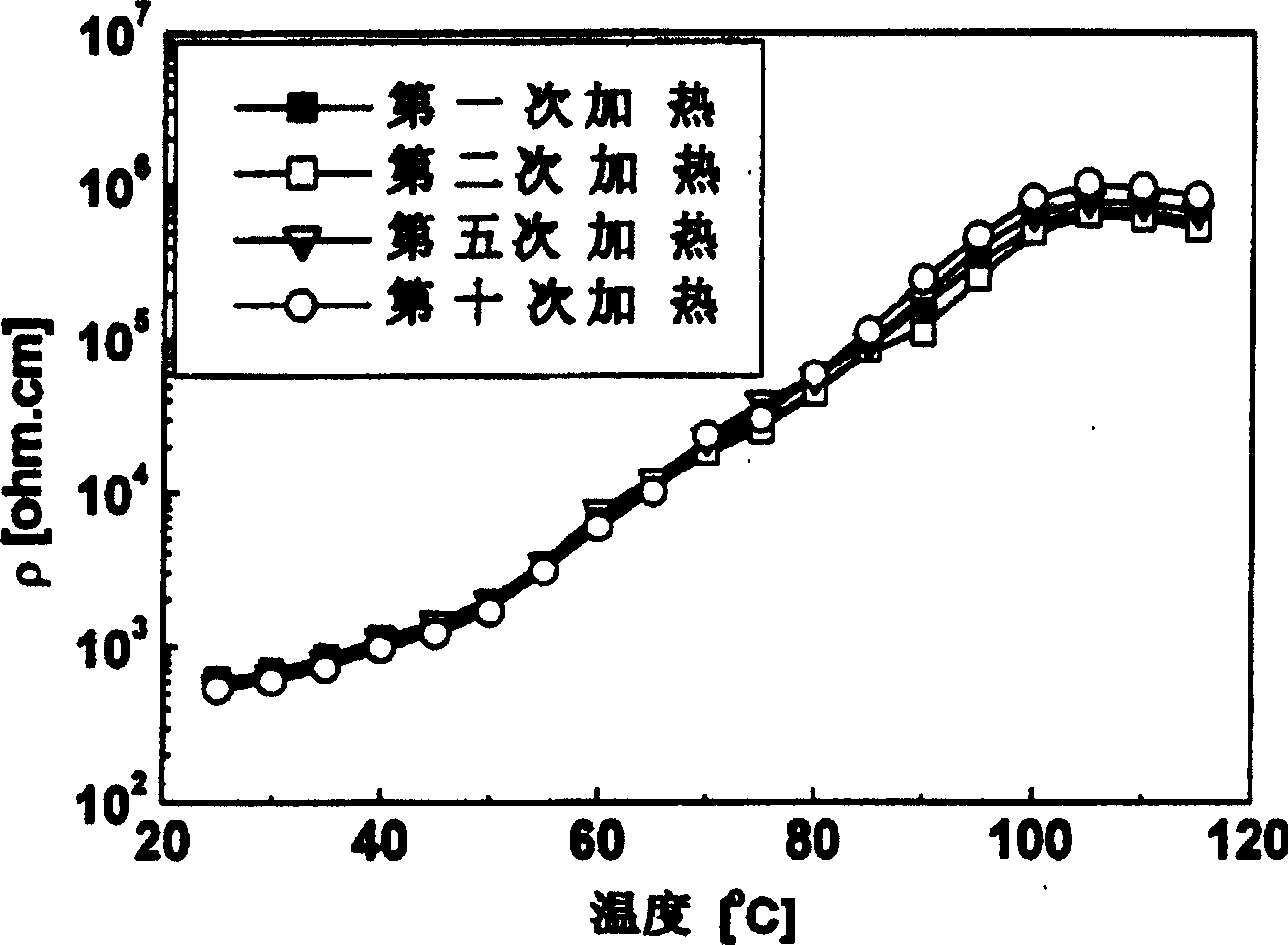Electrically conductive composite material possessing positive temperature coefficient
A conductive composite material and positive temperature coefficient technology, applied in the field of conductive polymer composite materials, can solve the problems of strict chemical cross-linking processing technology, damage to the mechanical properties of composite materials, high cross-linking requirements, etc., to achieve continuous work and The effects of long intermittent operation life, improved repetitive stability, and good thermal conductivity
- Summary
- Abstract
- Description
- Claims
- Application Information
AI Technical Summary
Problems solved by technology
Method used
Image
Examples
Embodiment Construction
[0031] The present invention will be further described below through embodiments and accompanying drawings.
[0032] Examples 1-11 manufactured PTC conductive composite materials according to the above-mentioned specific steps and process conditions, and Comparative Examples 1-4 except that the conductive filler was not treated, other steps and process conditions were the same as in the examples. Following table 1, table 2 are the character of each component raw material used in embodiment and comparative example, and table 3 is the charging amount (by weight) of component raw material in each embodiment and comparative example, and table 4 is each embodiment And the performance of the product composite material of comparative example.
[0033] type
[0034] The average particle size
[0035] A1 / A2
[0036] Room temperature resistivity
[0037] *In order to characterize the PTC effect of the material or the characteristics of the r...
PUM
| Property | Measurement | Unit |
|---|---|---|
| particle size | aaaaa | aaaaa |
| particle size | aaaaa | aaaaa |
| electrical resistivity | aaaaa | aaaaa |
Abstract
Description
Claims
Application Information
 Login to View More
Login to View More - R&D
- Intellectual Property
- Life Sciences
- Materials
- Tech Scout
- Unparalleled Data Quality
- Higher Quality Content
- 60% Fewer Hallucinations
Browse by: Latest US Patents, China's latest patents, Technical Efficacy Thesaurus, Application Domain, Technology Topic, Popular Technical Reports.
© 2025 PatSnap. All rights reserved.Legal|Privacy policy|Modern Slavery Act Transparency Statement|Sitemap|About US| Contact US: help@patsnap.com



